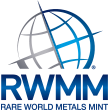Tellurium bar - one kilogram - .9997 bullion
First identified as an unknown metal in gold ore (calaverite) near the present day city of Sibiu, Romania, tellurium's discovery in 1782 would eventually be credited to Franz-Joseph Muller von Reichenstein who spent three years on laboratory work to characterize this metal. Though he never identified it as a new element he did help determine it was not antimony or bismuth as had initially been suspected. This new element would later be named tellurium by Martin Heinrich Klaproth in 1798. Tellurium is extremely rare in the Earth's crust (see below link to our favorite chart detailing where our metals fall in terms of their relative rarity), about as rare as platinum. Gold telluride is the most common gold containing compound, though itself is more rare than naturally occurring, i.e. native, gold. See below link to our blog for some other interesting nuggets regarding tellurium as it relates to the gold rushes of the 19th century.
Today the largest industrial uses for tellurium are in metallurgy, specifically to improve the properties of iron, copper, and lead. Its use is growing rapidly in the production of cadmium-telluride solar panels, some of the most efficient ever produced. It is also used in solid-state x-ray detectors, computer chips, optical and blu-ray discs, infrared detectors, telecommunication fiber, as a colorant in glass and ceramics, and in the vulcanization of rubber. The U.S. Dept. of Energy predicts a shortage of tellurium by 2025.
Inscribed on our bars are the chemical symbol (Te), purity (99.97%), weight (one kilogram), and a serial number (this number is unique and will vary), and our dual logos. The reverse is blank. These bars are lightly polished, but the underlying crystallization pattern is still visible and may have superficial fissuring or light surface cracking. We've recently added the option of multi-kilogram tellurium bars with at least 99.9% purity which are not inscribed but will also come with an assay certificate. There can be small edge dings/chips, surface oxidation, and other small imperfections and discolorations on all of our tellurium bars which do not detract from the inherent value of this rare industrial metal. These will oxidize over time (and in fact, many from these batches have already started) so we advise to store them in a cool, dry place to slow down the oxidation process. As always, weight and purity are guaranteed by Rare World Metals Mint. Tellurium in the solid form we supply is considered safe though can be toxic if ingested or if powderized or incinerated forms are inhaled. Those with such toxic tellurium exposures often emit a characteristic garlic odor, called tellurium breath, and an equally offensive body odor. It is also known to be teratogenic (keep away from those who are pregnant or potentially pregnant). It's fine turnings and powders can ignite in air and incineration can cause toxic fumes. Please keep these bars intact and in a safe place. Do not ingest, burn or inhale. Keep away from children. And, lastly, don't get tellurium breath or your wife and children will keep away from you too, perhaps forever!
Each bar will be shipped with an assay certificate and every shipment includes our velvet logo bag. If you are not completely satisfied with any purchase from us, you have 30 days to return it for a full refund (buyer to pay return shipping). Domestic shipping is free for all orders over $199 (enter code free shipping at checkout). For orders of $199 or under, domestic shipping is $9.95. International shipping is via DHL, FedEx or USPS international express and will cost $65 for this one kg bar and about $85 for the multi-kg bar. International customers please be aware that your country may levy import duties and/or VAT taxes on your purchase from us. We have nothing to do with this and cannot pay it for you. If you refuse our package because of this extra cost we will take it back and will refund your order in full once received minus the cost of the return shipping. If you are unsure what these import costs will be please check with your country's customs office.












